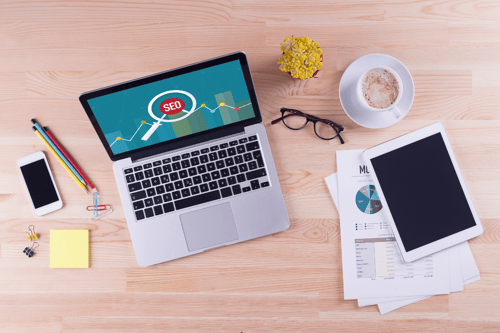Email marketing has remained one of the most effective and cost-efficient ways to stay in contact with customers and prospects. But it’s not as simple as drafting an email and pushing a button – there are best practices to ensure success. Unlike B2C email campaigns, B2B sales cycles are longer and involve multiple stakeholders, this needs to be considered when drafting B2B marketing emails for automation.
It’s good business sense to utilise the power of email automation!
Email automation involves setting up a series of pre-written emails, known as a workflow or drip campaign, which are triggered by a particular action or behaviour by the recipient. User behaviour triggers could be signing up for a newsletter or abandoning a shopping cart.
By delivering a series of targeted and timely messages, a drip campaign can help to build relationships, increase engagement, and drive conversions, while also saving time and resources by automating the process.
Successful B2B email automation requires a tailored approach to engage your audience, drive conversions, and boost your ROI (Return on Investment).
In this article, we’ll explore proven best practices for B2B email automation that will help you get noticed and drive results.
Understanding Your Audience
The most crucial step in effective B2B email marketing is understanding who you're targeting. Knowing what kind of information your customers and prospects are looking for will help you plan the type of content you need to send out. To get a better understanding of your audience, look at their previous interactions with your emails, such as open rates, click-throughs, and unsubscribes. Use surveys or polls to ask questions about what they want to hear from your business.
By understanding who you're targeting and what appeals to them, you'll be better equipped to create content that is both interesting and engaging. Once you know who you are targeting, segment them into lists. Lists are a superpower in email marketing, by segmenting your lists based on specific criteria, such as demographics, behaviour, interests, and preferences you can deliver more targeted and relevant content to each subgroup, increasing the chances of engagement and conversion.
Set Goals for Your B2B Email Campaigns
This will help ensure that you stay focused on what you want to achieve with your emails and measure the success of your campaign. Did you know, email engagement is cited as the fourth most insightful metric when evaluating performance? (This is higher than social media, lead quality and search rankings!)
When setting goals, consider things like click-through rates, open rates, conversion rates, email list growth, and ROI. This will help you create more detailed objectives that are aligned with your business's overall strategy.
Once you have these steps defined, it’s time to start implementing email automation.
Personalise Your Audience's Experience
When it comes to email automation, personalization is key. You should aim to customize your emails and send them at times when they are likely to be opened and read. You can also use dynamic content to tailor emails based on individual preferences, making them feel even more personalized and tailored to each reader.
This will help to build trust and make your readers more likely to interact with the emails you send them. Likewise, using your name in the ‘From’ field, instead of a team inbox, is a fantastic way of personalising your company and work towards building business relationships.
Optimise Your Email Headlines and Subject Lines
Your email headlines should be concise, descriptive, and attention-grabbing. Likewise, your subject lines should be written so that they stand out from the crowd of emails your audience may receive daily.
Try to evoke some curiosity in your recipient, this will ensure that more people open your emails, increasing engagement and ROI. Also check this list of spam words to avoid going straight to the junk folder.
Write Engaging Content
The content of your automated emails should be tailored to your brand voice, interesting, informative, and engaging for your audience. Your content should be concise but provide value so that recipients continue to engage with your emails over time.
You should also consider the use of visuals, such as images and GIFs, to draw attention and increase engagement.
Optimise Delivery Timing
To maximise your ROI, you need to optimise the timing of your automated emails. This means understanding when your specific target audience is most likely to engage with email content and scheduling your emails accordingly.
Think about your client, is it better for emails to be sent during business hours? Think about timing delays when a trigger is met - do you want an email to be sent immediately, or with a delay? Similarly, if the recipient hasn’t taken a desired action, how soon do you want to send a follow up email? Knowing your buyer personas should answer these questions for you, but, like all good marketing, it’s all in the data!
Monitor Performance
It’s important to regularly review the analytics of your automated email campaigns to evaluate their effectiveness and adjust where needed. You should track metrics such as open rates, click-through rates, and conversions to better understand how well your campaign is performing.
Once you have reviewed the performance of your automated email campaigns and identified areas for improvement, it’s time to make any necessary adjustments and test them out. This could include tweaking the timing of your emails or adjusting copy with A/B testing, or images to achieve better results.
Smart marketers use email automation!
Implementing B2B email automation can be a game-changer for businesses looking to improve engagement and ROI. However, to maximise the benefits, it's crucial to follow best practices and continuously adjust your strategy.
By understanding your audience, setting clear goals, creating compelling content, using personalisation, integrating with other channels, and testing and optimising, you can enhance the effectiveness of your email marketing efforts.
Therefore, taking the time to establish a thorough understanding of B2B email automation best practices is crucial for achieving better engagement rates and improved ROI. Need help with your email marketing? Book a free digital marketing report and consultation with us.


.png?width=500&name=A%20group%20of%20people%20talking%2c%20taking%20part%20in%20market%20research.%20(3).png)






